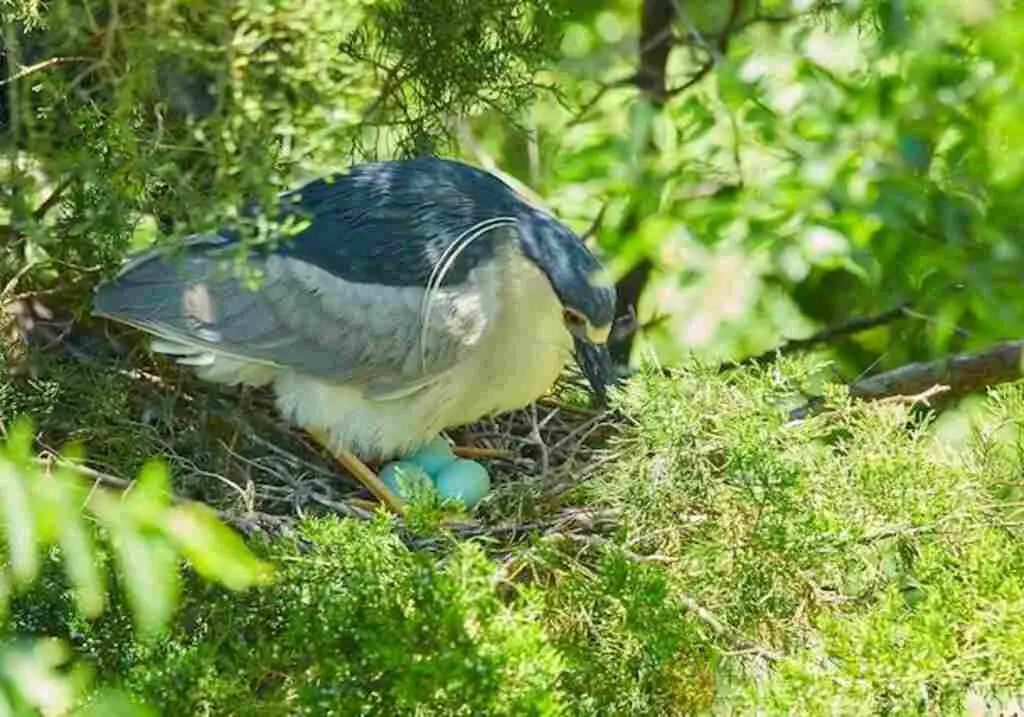Do you have pet birds or enjoy birdwatching? If so, you may be wondering when do birds stop laying eggs? The answer to this question varies depending on a variety of factors, including the bird’s age, laying cycle, environment, and genetics.
In this article, we will explore these factors and provide insights into when you can expect your feathered friends to stop laying eggs.
Egg-laying is a natural biological process for most birds, and it is essential for the survival of their species. However, there comes a time when birds stop laying eggs, and this can be due to a variety of reasons.
Understanding when this occurs can help you better care for your birds and ensure they are living a healthy and happy life.
So, let’s dive into the world of bird egg production and discover when birds generally stop laying eggs.
Table of Contents
- 1 Egg-Laying Season
- 2 Age Matters
- 3 Laying Cycle
- 4 Factors Affecting Laying Cycle
- 5 Environmental Impact
- 6 Changes in Daylight Hours
- 7 Food and Water Availability
- 8 Breeding Season
- 9 Breeding Season Timing
- 10 Climate Influence on Breeding Season
- 11 Health and Genetics
- 12 Genetic Factors in Egg Production
- 13 Disease Impact on Laying Capability
- 14 Conclusion
- 15 Frequently Asked Questions
- 16 Author
Egg-Laying Season
As you peruse this section, you’ll discover the duration of the egg-laying season for our feathered friends. While some birds lay eggs all year round, most species have a specific time of the year when they engage in bird egg production.
This period is known as the ‘egg-laying season,’ and it varies from one bird species to another. The duration of the egg-laying season is influenced by various factors, including environmental conditions, food availability, and breeding territories.
For instance, birds living in tropical climates where food is abundant throughout the year may lay eggs all year round.
Conversely, birds living in temperate regions where winter temperatures are harsh may stop laying eggs during the cold season and resume once the weather warms up.
The length of the egg-laying season can also vary within a bird species depending on the bird’s age, breeding experience, and health.
Generally, younger birds tend to lay eggs for a shorter period than older birds. As the bird ages, it gains more experience and stamina to produce eggs for an extended period.
In the next section, we’ll delve deeper into how age affects bird egg production.
Here is a table showing the egg-laying season for some common bird species:
| Bird Species | Egg-Laying Season |
|---|---|
| American Goldfinch | Late May to mid-August |
| Blue Jay | March to July |
| Canada Goose | Late March to early May |
| Common Loon | Late May to early June |
| Eastern Bluebird | March to August |
| Eastern Phoebe | April to early August |
| House Sparrow | March to August |
| Mallard Duck | Early March to late June |
| Northern Cardinal | March to September |
| Peregrine Falcon | Late March to early April |
| Robin | March to August |
| Ruby-throated | Hummingbird Late March to early September |
| Tree Swallow | April to early July |
Note: This table is not exhaustive, and egg-laying seasons may vary depending on the location and climate.
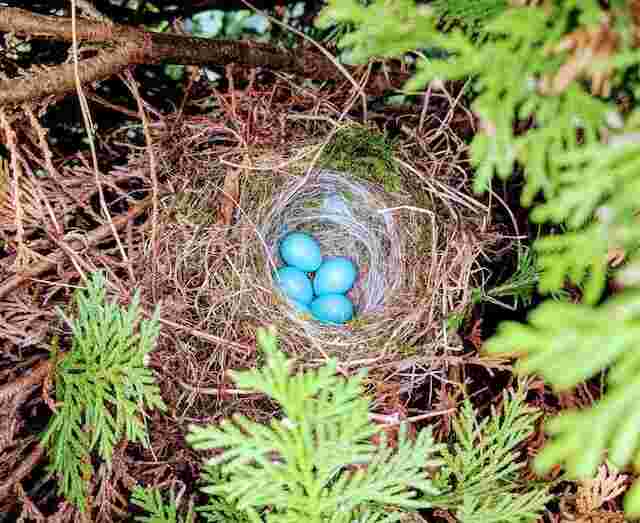
Age Matters
You’ll want to know how old your feathered friend is because age plays a big role in determining when they’ll stop producing eggs. As birds age, they experience a natural decline in egg production.
This is why older birds tend to lay fewer eggs or stop laying altogether. The exact age at which this happens varies according to the species.
For example, chickens usually reach their peak egg production at around 6 months of age and continue laying for about 2-3 years. After that, they may still lay eggs, but at a significantly reduced rate.
Other birds, such as geese and ducks, can lay eggs for up to 10 years or more. However, the end of bird egg laying cycle is inevitable, and it will happen sooner or later.
In general, age-related decline in egg production is a natural part of a bird’s life cycle. If you want to keep your feathered friend happy and healthy, it’s important to provide them with proper care and nutrition throughout their life.
When your bird reaches the end of their egg-laying cycle, you may consider retiring them to a comfortable and peaceful retirement, where they can live out their days in peace without the pressure of producing eggs.
| Bird Species | Age of First Egg | Age When Eggs Stop Being Laid |
|---|---|---|
| Chicken | 5-6 months | 2-3 years |
| Pigeon | 6 months | 4-5 years |
| Canary | 6-8 months | 3-4 years |
| Finch | 4-7 months | 4-5 years |
| Parrot | 1-3 years | 20-30 years |
| Ostrich | 2-3 years | 30-40 years |
Please note that the age of the first egg and the age when eggs stop being laid can vary depending on factors such as the health of the bird, the quality of their diet, and environmental conditions. The table above provides only rough estimates.
Laying Cycle
Understanding the laying cycle of your feathered friend is crucial in maintaining their health and well-being. After a hen has reached maturity, she’ll begin to lay eggs regularly. This is known as the bird egg-laying cycle.
The frequency at which a hen lays eggs is influenced by various factors, including age, breed, and environmental conditions.
As the end of the egg-laying season for birds approaches, you may notice that your feathered friend has stopped laying eggs. This is known as the cessation of bird egg laying.
Generally, hens will stop laying eggs during the colder months when daylight hours decrease. This is because hens need a certain amount of daylight to maintain their egg-laying schedule.
As daylight hours increase in the spring, hens will typically resume laying eggs. It’s important to note that individual hens may have different laying cycles.
Some hens may stop laying eggs altogether after a certain age, while others may continue to lay eggs well into their golden years. Other factors affecting laying cycle include diet, stress, and illness.
By understanding your bird’s laying cycle and monitoring their health, you can help ensure that they are happy and healthy year-round.
| Bird Species | Egg-Laying Period (Days) | Eggs Laid per Cycle | Days Between Eggs | Laying Pattern |
|---|---|---|---|---|
| Domestic Chicken | 21 | 12-15 | 1 | Every day |
| House Sparrow | 12-15 | 4-6 | 1 | Every other day or daily |
| American Robin | 13 | 3-5 | 1 | Every other day or daily |
| Mallard Duck | 28 | 8-13 | 1 | Every other day or daily |
| Emperor Penguin | 66 | 1 | N/A | Lays one egg per season |
| Bald Eagle | 35-40 | 1-3 | 2-5 | Every other day or longer |
| Ostrich | 42-46 | 40-100 | 1-2 | Every other day or daily |
| Northern Mockingbird | 12-13 | 2-6 | 1 | Every other day or daily |
| Red-tailed Hawk | 28-35 | 1-4 | 2-3 | Every other day or longer |
| Common Loon | 26-29 | 1 | N/A | Lays one egg per season |
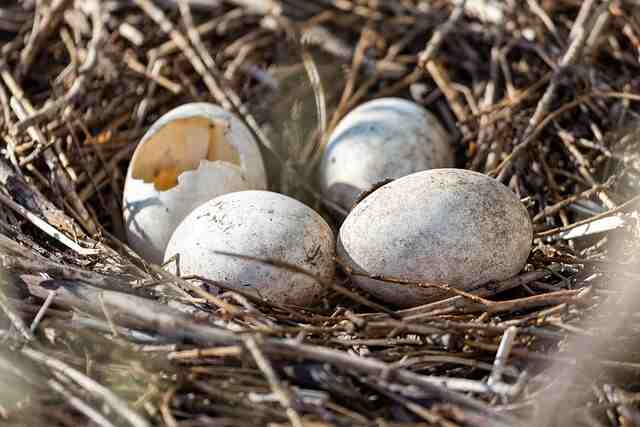
Factors Affecting Laying Cycle
Various factors can affect a bird’s egg production, leading to the cessation of bird egg laying.
One of the primary factors that determine how often a chicken lays eggs is its breed. Some breeds of chicken are known for their high egg production, while others lay fewer eggs.
Age is another factor that impacts a hen’s laying cycle. As hens age, they tend to lay fewer eggs and take longer breaks between laying.
The environment in which a bird lives can also affect its egg production. Factors such as light, temperature, and humidity play a crucial role in a hen’s laying cycle.
Hens require at least 14 hours of light per day to continue laying eggs.
If they are exposed to less light, their egg production may decrease. Similarly, if the temperature and humidity are too high or too low, it can lead to a decrease in egg production.
Lastly, diet, stress, and illness can all impact a hen’s laying cycle. Chickens require a balanced diet rich in calcium and protein to maintain their egg production.
If their diet is deficient in nutrients, it can lead to a decrease in egg production.
Stress and illness can also cause a hen to stop laying eggs. When a hen is stressed, it can cause hormonal imbalances, leading to a decrease in egg production.
Similarly, when a hen is sick, it may prioritize its energy towards healing, leading to a decrease in egg production.
| Factors Affecting Laying Cycle | Description |
|---|---|
| Breed | Some chicken breeds lay more eggs than others |
| Age | Hens lay fewer eggs and take longer breaks between laying as they age |
| Environment | Factors such as light, temperature, and humidity can impact egg production |
| Diet | A balanced diet rich in calcium and protein is necessary for maintaining egg production |
| Stress and illness | Stress and illness can cause hormonal imbalances and decrease egg production |
| Seasonal changes | Changes in day length and temperature can affect egg production |
| Hormonal imbalances | Abnormalities in hormones such as estrogen can impact egg production |
| Environmental stressors | Exposure to loud noises, predators, and other stressors can impact egg production |
Environmental Impact
If your hen’s environment isn’t properly maintained, it can negatively impact her egg production. Environmental factors that influence bird egg laying cessation include temperature, humidity, light, and the availability of food and water.
Failure to maintain these conditions can cause stress on the hen, disrupting her laying cycle and causing her to stop laying eggs earlier than usual.
Seasonal variations in bird egg production are also influenced by environmental factors. As the weather gets colder, hens may reduce or stop laying eggs altogether.
This is because they require more energy to stay warm, which means they may not have enough energy to produce eggs.
Changes in daylight hours can also impact a bird’s egg laying season. As the days get shorter, hens may stop laying eggs for the winter and start again in the spring when the days get longer.
Understanding the impact of environmental factors on bird egg laying season is important for maintaining a healthy and productive flock.
By ensuring that the hen’s environment is properly maintained, you can help prolong her laying cycle and keep her producing eggs for longer.
In the next section, we will discuss how changes in daylight hours can impact a bird’s egg laying season.
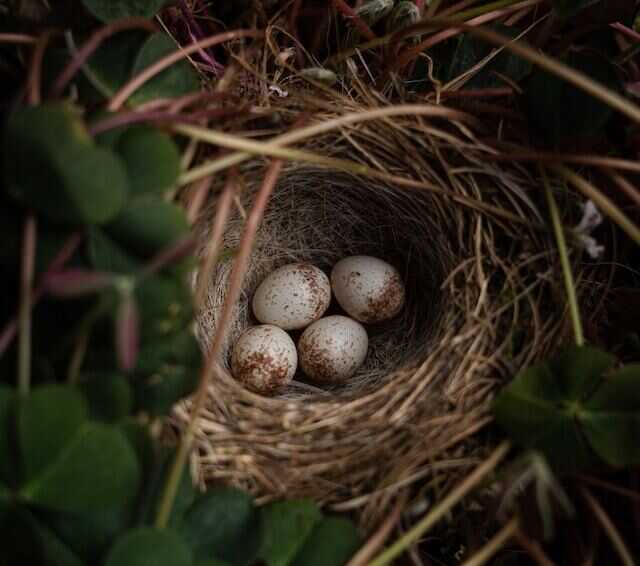
Changes in Daylight Hours
Changes in daylight hours can have a significant impact on the bird egg-laying cycle. As the days get shorter, birds receive signals from their environment that it’s time to prepare for winter.
These signals can trigger a variety of changes in behavior, including changes in feeding patterns, migration, and, most relevant to our topic, seasonal egg-laying patterns.
To better understand how daylight affects bird egg-laying, let’s take a closer look at some of the environmental triggers for egg-laying cessation during the fall and winter months:
- Decreased daylight hours: As the days get shorter, birds receive less light, which can trigger hormonal changes that lead to decreased egg production.
- Food availability: During the winter months, food can become scarce, which can put stress on birds and lead to a decrease in egg production.
- Temperature changes: As temperatures drop, birds may need to spend more time keeping warm, which can leave less time and energy for egg production.
It’s important to note that while daylight is a significant trigger for egg-laying cessation, other factors also play a role. For example, some birds may continue to lay eggs throughout the winter if food and water are plentiful and other environmental conditions are favorable.
As we move forward in our exploration of when birds stop laying eggs, we’ll next investigate how food and water availability impacts the bird egg-laying cycle.
Food and Water Availability
To better understand how food and water availability impact the bird egg-laying cycle, you need to consider the availability of these resources during the winter months and how they can affect the stress levels and energy levels of the birds.
When food and water become scarce during the winter, birds may reduce their egg production as a means of conserving energy.
This is because the production of eggs requires a lot of energy, and if the bird is already struggling to find enough food and water, it may not have enough energy to continue laying eggs.
Environmental factors such as temperature and precipitation can also play a role in the cessation of egg laying in birds.
Extreme weather conditions can make it difficult for birds to find food and water, which can lead to stress and reduced energy levels.
These factors can cause a disruption in the hormonal balance of the bird, leading to a decrease in egg production.
For example, research has shown that prolonged exposure to high temperatures can result in a decrease in egg laying in poultry.
To better understand the impact of food and water availability on bird egg production, refer to the following table:
| Resource Availability | Impact on Egg Laying |
|---|---|
| Abundant | Increased |
| Scarce | Decreased |
| Inconsistent | Irregular |
| Optimal | Consistent |
Understanding how food and water availability affects egg-laying patterns in birds is essential in managing their breeding season. By ensuring that birds have access to optimal resources, we can help them maintain consistent egg production.
In the next section, we will discuss the breeding season and how it relates to the cessation of egg laying in birds.

Breeding Season
Now that you understand how food and water availability can impact the egg-laying cycle, let’s explore the breeding season and its relationship to the cessation of egg production in your feathered friends.
Birds usually lay eggs during breeding season. This is a period when the weather is warm and days are longer. In general, birds lay eggs during the spring and summer months.
However, some bird species have different egg production timing.
Bird egg production is affected by various factors such as sunlight duration, availability of food and water, and temperature.
During the breeding season, birds lay eggs to reproduce their species. After laying eggs, the female bird incubates them until they hatch.
Once the eggs hatch, the chicks need to be fed and cared for by their parents. This is why birds stop laying eggs when the breeding season is over.
Breeding season timing varies among bird species. Some birds start breeding earlier than others, while some breed later.
Additionally, the length of the breeding season varies depending on the bird’s location and habitat.
For example, birds in tropical areas may breed throughout the year, while those in colder climates may have a shorter breeding season.
Understanding the breeding season timing of the bird species you have can help you predict when they will stop laying eggs.
| Species | Breeding Season | Eggs per clutch | Incubation Period (days) | Number of Clutches per Year |
|---|---|---|---|---|
| American Goldfinch | June – August | 4-6 | 11-14 | 1-2 |
| Mourning Dove | April – September | 2 | 14-15 | 2-3 |
| Barn Swallow | April – August | 3-7 | 14-16 | 2 |
| Mallard Duck | February – June | 8-13 | 27-28 | 1 |
| Great Horned Owl | January – February | 2-3 | 30-37 | 1 |
| Bald Eagle | February – April | 1-3 | 34-36 | 1 |
| Common Loon | May – July | 1-2 | 28-30 | 1 |
| Red-tailed Hawk | March – June | 2-3 | 28-35 | 1 |
| House Sparrow | March – September | 4-6 | 11-14 | 2-3 |
Breeding Season Timing
Knowing the specific timing of breeding season for your feathered friends can help you plan and prepare for their natural reproductive cycle, allowing for a deeper understanding and connection with these amazing creatures.
Different bird species will have their own specific breeding season, which can vary depending on their geographic location and other factors.
During this time, birds will engage in courtship behavior and begin to lay eggs in preparation for the arrival of their offspring.
The timing of bird breeding season can be influenced by a variety of factors, including the availability of food and nesting sites, as well as changes in weather patterns.
In some cases, bird egg production may begin earlier or later than usual, depending on these factors.
Additionally, the length of the breeding season can vary, with some species laying eggs for several months, while others may only produce eggs for a few weeks.
Understanding the egg-laying patterns in birds can help you anticipate when your feathered friends will stop laying eggs.
In some cases, birds may only lay a few eggs before the breeding season comes to an end, while others may continue to lay eggs for several months.
By paying attention to the specific breeding season timing of your bird species, you can better understand and appreciate the natural reproductive cycle of these amazing creatures.
In the next section, we will explore how climate can influence bird breeding season and egg-laying patterns.
| Species | Breeding Season | Eggs per Clutch | Incubation Period (days) | Number of Clutches per Year |
|---|---|---|---|---|
| American Goldfinch | May – July | 3 – 6 | 11 – 14 | 1 |
| Eastern Bluebird | March – August | 2 – 7 | 12 – 14 | 2 |
| Mourning Dove | March – September | 2 | 14 – 15 | 2 |
| Northern Cardinal | March – August | 2 – 5 | 11 – 13 | 2 |
| Ruby-throated Hummingbird | April – July | 1 – 3 | 12 – 14 | 1 |
| Tree Swallow | April – July | 4 – 7 | 14 – 15 | 2 |
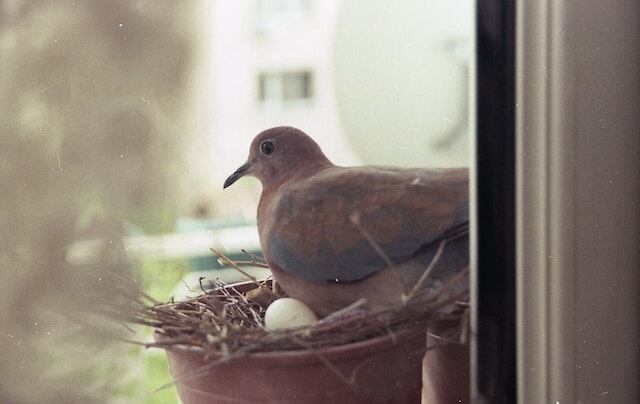
Climate Influence on Breeding Season
As the seasons change and the climate fluctuates, the reproductive cycles of our feathered companions are greatly affected, showcasing the intricate and delicate balance between nature and its inhabitants. The timing of bird breeding season is largely influenced by temperature, light, and food availability.
Here are some factors that affect bird egg production:
- Temperature: Bird egg production is triggered by the lengthening daylight hours and rising temperatures. As the weather warms up, birds become more active, and their hormonal systems start working to prepare them for breeding season.
- Availability of food: Some birds rely on specific food sources to build up the energy needed for egg production. If the food is scarce, they may delay breeding or produce fewer eggs.
- Habitat: Different bird species prefer different habitats. For example, some birds breed in grasslands, while others prefer forests or wetlands. Changes to their habitat can affect their breeding season.
- Predators: Birds need a safe environment to breed. If there are too many predators in the area, they may avoid nesting or have lower egg production.
In summary, the timing of bird egg production is influenced by a combination of factors, and changes to any one of them can affect the breeding season. Understanding these factors can help us better protect and conserve our bird populations.
In the next section, we’ll explore how bird health and genetics play a role in egg production.
Health and Genetics
Birds’ egg production is greatly influenced by their health and genetics, highlighting the importance of understanding these factors in maintaining healthy bird populations.
When it comes to bird egg production, there are many factors that can limit the number of eggs laid. One of the most common factors is fertility decline in birds.
As birds age, their fertility decreases, leading to a decline in the number of eggs laid. In addition to age-related decline in egg production, other factors can impact a bird’s ability to lay eggs.
These factors can include underlying health conditions, nutritional deficiencies, and environmental stressors.
For example, if a bird is not receiving adequate nutrients or is exposed to harmful chemicals, their egg production may be impacted.
It is important to understand the impact of these factors on egg production so that appropriate interventions can be made to ensure healthy bird populations.
Understanding the health and genetics of birds is critical for maintaining healthy bird populations and ensuring optimal egg production.
By monitoring bird health and addressing any underlying health issues, we can help to prevent declines in egg production.
Additionally, understanding the genetic factors that impact egg production can help breeders to select birds with optimal egg-laying abilities.
In the next section, we will explore genetic factors in egg production and how they impact bird populations.
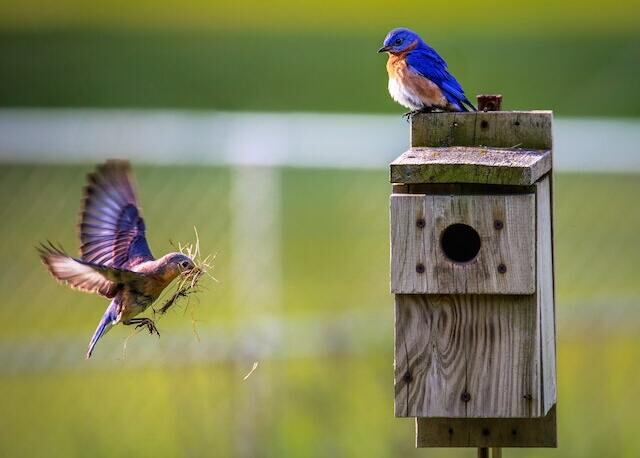
Genetic Factors in Egg Production
Understanding the genetic factors that impact bird egg production is crucial for breeders who wish to maintain healthy bird populations. These factors play a significant role in determining the optimal egg-laying abilities of a bird.
For instance, certain genetic traits that increase the size of a bird’s ovary may contribute to higher egg production. Other factors that affect egg production include the bird’s age, its diet, and the environment in which it lives.
There are several factors that impact bird fertility and contribute to the age-related decline in egg production.
For example, as a bird ages, the quality and quantity of its eggs may decrease, leading to lower egg production.
Additionally, certain genetic mutations can impact the bird’s fertility, making it less likely to lay eggs. Other factors that can negatively impact egg production include stress, disease, and poor nutrition.
In summary, understanding the genetic factors that impact bird egg production is crucial for maintaining healthy bird populations.
By selecting birds with optimal egg-laying abilities, breeders can ensure that their flocks are healthy and productive.
However, factors such as age, diet, and disease can also impact egg production, so it’s essential to consider all of these factors when selecting birds for breeding.
In the next section, we’ll examine how disease can impact a bird’s laying capability.
Genetic factors that affect egg laying:
| Description | Factors |
|---|---|
| Age at sexual maturity | Highest heritability among all parameters. Affects entire reproductive cycle. |
| Egg weight and quality | Mainly influenced by the maternal genotype. |
| Egg Production Rate (EPR) | Influenced somewhat by maternal genotype but mostly by environmental variables. |
| Yolk color and composition | Influenced by maternal diet and environmental factors. |
| Shell strength and thickness | Influenced by both maternal and paternal genes. |
| Hatchability and embryo development | Affected by maternal genotype and environmental factors, such as temperature and humidity. |
Notably, there is a strong association between egg weight and yolk quality due to genetics. This factor impacts production rate, shell strength, as well as hatchability traits substantially. Additionally, the yolk color and composition can affect the nutritional value and appeal of the egg to consumers.
Disease Impact on Laying Capability
It’s heartbreaking to see that diseases can devastate a bird’s ability to produce eggs, leading to a decline in their overall health.
When a bird contracts a disease, it can cause a significant impact on their reproductive system, which can lead to a decline in their egg production.
Diseases such as avian influenza, Newcastle disease, and Marek’s disease can cause a severe impact on bird egg production, leading to a decline in the bird’s overall health.
The impact of disease on bird egg production can be quite severe, leading to a decline in the bird’s fertility.
When a bird’s reproductive system is compromised, it can lead to a lack of egg production or a decrease in the quality of the eggs being produced.
This can be quite problematic for farmers who rely on their birds for egg production.
It’s essential to take preventative measures to ensure that birds are protected from diseases that could impact their laying capability.
In conclusion, it’s crucial to ensure that birds are protected from diseases that can impact their laying capability.
While genetic factors can play a role in egg production, diseases can cause a significant decline in the bird’s overall health and ability to lay eggs.
By taking preventative measures such as vaccination and proper biosecurity measures, farmers can ensure that their birds are healthy and productive, leading to a more sustainable and profitable operation.

Conclusion
Now that we’ve discussed the impact of diseases on a bird’s ability to produce eggs, let’s conclude our topic by understanding when birds stop laying eggs.
Egg production in birds is determined by the length of daylight hours, and as the days become shorter, birds naturally reduce their egg production. This is known as the end of the egg-laying season.
The exact timing of the end of the egg-laying season varies depending on the species of bird, but generally, it occurs in the fall or winter months. As the bird’s fertility declines, they will stop laying eggs until the following spring, when the days become longer again.
It’s important to note that not all birds stop laying eggs at the same time, and some species may continue to lay eggs throughout the winter months.
It’s also worth noting that the age of the bird can impact their egg production. As birds age, their fertility declines, and they may lay fewer eggs. In some cases, older birds may stop laying eggs altogether.
Overall, understanding bird egg production and the timing of the egg-laying season can help bird owners and enthusiasts better care for their feathered friends.
Frequently Asked Questions
What is the average lifespan of a bird that lays eggs?
As you contemplate the average lifespan of a bird that lays eggs, it’s essential to know that various factors can affect it. The type of bird you’re considering, their habitat, and even their diet can all play a role.
However, on average, these feathered creatures can live anywhere from a few years to over a decade. This lifespan can be even longer for some species, such as the majestic eagle, which can live up to thirty years in the wild.
Knowing the lifespan of a bird that lays eggs is fascinating, but it’s important to remember that each bird’s life is unique and precious.
Can birds lay eggs without a mate?
Did you know that some birds, like chickens, can lay eggs without a mate?
This is because they’re able to produce eggs through a process called parthenogenesis, where an egg develops without fertilization.
However, not all bird species are capable of this and require a mate to fertilize their eggs.
It’s important to note that even if a bird is able to lay eggs without a mate, the eggs won’t hatch into viable offspring without fertilization.
So, while it’s possible for some birds to lay eggs without a mate, it’s not a sustainable reproductive strategy.
How long does it take for a bird to lay an egg?
As you watch your feathered friend hop around their nesting area, you may wonder how long it takes for them to lay an egg.
Well, the answer varies depending on the species of bird. Some birds, like chickens, can lay an egg every 25 hours, while others may take several days to produce one egg.
During the egg-laying process, the bird’s body is hard at work producing and forming the egg, which can take anywhere from a few hours to a day.
So, next time you’re observing your avian companion, take a moment to appreciate the incredible process of egg-laying that they go through.
Do all bird species lay eggs at the same time of year?
Are you curious to know if all bird species lay eggs at the same time of year? The answer is no.
Different bird species have different breeding seasons, which can vary depending on factors such as location, climate, and food availability.
For example, some birds in the northern hemisphere typically lay their eggs in the spring and summer months, while others in the southern hemisphere may lay their eggs in the fall and winter.
Additionally, some birds may have multiple breeding seasons throughout the year, while others only breed once.
So, it’s important to research the specific species you’re interested in to determine their breeding habits and when they may lay eggs.
Can a bird lay eggs all year round?
Birds are quite amazing creatures, and did you know that they can lay eggs all year round? Yes, you read that right!
Unlike other animals, birds do not have a specific breeding season, and the timing of their egg-laying depends on several factors such as food availability, daylight, and temperature.
Some species of birds, like chickens, have been extensively bred to lay eggs all year round, while others have their own unique patterns.
So, if you ever decide to raise birds, don’t be surprised if you find a few eggs in your nest box even in the middle of winter! After all, birds are full of surprises, and that’s what makes them so fascinating.

